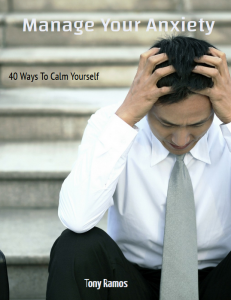
TTUHSC, Texas using telehealth to help children with mental health
Editor’s Note — Might need one.
Imagine being struck by fear. Not just any fear, one that shakes you to the core. One that feels like it will never pass. One that is accompanied by a darkness — one that you cannot see but only feel.
You feel your chest tightening, your heart racing, your thoughts going a million miles an hour and you can’t stop it. The feeling of losing control sinks in — like your life just shattered into a million pieces and there is no sense of hope.
Or how about waking up one day and being unable to get out of bed. Your chest feels heavy and you start thinking dark thoughts that you’re too exhausted to fight.
The words start growing into deeper and darker thoughts until you think, “I’m better off dead.”
According to a study published in the National Library of Medicine’s National Center of Biotechnology Information, this is what those who struggle with a mental crisis deal with.
Now try thinking about having to deal with one or the other or even both every day of your life as a child.
Founded in 1909, Mental Health America has been keeping track of data and statistics on mental health and ranked Texas 46 out of 51 in America for higher mental health prevalence and the least access to mental health in 2021.
Around 17% or 429,000 of youth (12-17) in Texas faced at least one major depressive episode, with 10% or 261,000 youth experiencing major depression.
Texas also ranked second in having the highest number of youth not receiving any mental health treatment and in not having private insurance cover mental health or emotional behavior — around 306,000 youth for both rankings.
With the Texas stats being so high and the need for adolescent mental health resources growing, one department, Texas Tech Health Sciences Center, is working to give students access to resources — especially in rural schools.
The Creation of Mental Health resources within rural schools
Managing Director Jennifer Rojas-McWhinney said the TTUHSC has had a program to help K-12 students since 2013 through a program called TWITR — the Telemedicine Wellness Intervention Triage and Referral Project.
The project at the time only served the Lubbock and Amarillo Region, Rojas-McWhinney said. In its five years, the program grew from 10 school districts servicing around 30,000 students to 22 districts with around 100,000 students.
TWITR would later change its name to Campus Alliance for Telehealth Resources.
Seeing the success individual universities were having with their own variation of a K-12 mental health program, Rojas-McWhinney said the 86th Texas Legislature created the Texas Child Mental Health Care Consortium.
The consortium united the 12 health-related institutions across Texas under five programs — one being Texas Child Health Access Through Telemedicine — which was based on TWITR/CATR.
“The CATR program, which was under Rural and Community Health, transitioned to the Department of Psychiatry and then grew,” she said. “We called it CATR supported by TCHATT because CATR still focused on Amarillo and Lubbock at the time, but TCHATT allowed for additional funding to go beyond just Lubbock and Amarillo.”
Now named TCHATT, The program now offers mental health aid to 85 permanent counties while offering aid to Mason and McCulloch Counties, overseen by the University of Texas HSC in San Antonio.
“We are the largest geographical region of any of the instances,” she said. “But we are not the most populated region and in part because we have such a large rural population of school districts of counties.”
Within those counties, 176 school districts are receiving help from the program, and 2014 students received aid during the 2022 academic school year.
How does TCHATT work?
Rojas-McWhinney said that she reached out to all the superintendents in her area to discuss what resources they can offer the school and students. It is up to them if they wish to utilize the services.
“When they do come on board, we do a walkthrough,” she said. “Where we walk through the school staff and sometimes the administrators, principals and superintendents, the process of our program and the services that we provide both the clinical services and the education and outreach services.”
Teachers can refer students through the program’s clinical services to be able to see mental health clinicians and psychiatrists. Educators can receive continuing educational credits through the program’s educational component.
“Districts have started inviting us during their orientation for a new year or after the December break starting for the spring semester to come during their professional development day and train their staff, whether it’s on stress management and how to help students to do that or if it’s for their staff,” she said.
Parents can also receive training from TTUHSC through the evidence-based practice program called YAM — Youth Aware of Mental Health — which specifically targets 8th and 9th graders.
“Our goal is to help create a culture of mental health knowledge of understanding where to go for resources, what are those legitimate resources locally at a state level at a national level and where can they go for help if they need help,” Rojas—McWhinney said.
It also teaches students how to communicate their needs to school administrators when it comes to mental health.
All of the educational programs are easily accessible through Zoom, she said.
On the clinical side — every district involved in it receives a cart from the TTUHSC for every school in the district. The cart is equipped with an iPad, a stadiometer, a portable scale and a blood pressure machine.
Rojas-McWhinney said they are used for students’ appointments — where they will be placed in a room that ensures HIPPA violations are not occurring.
Within those 87 counties — 755 campuses have received a cart.
Those carts are used locally at Lubbock, Plainview, Frenship and Lubbock-Cooper Independent School Districts.
Both Plainview and Frenship ISD spokespeople said they have been utilizing the program for around three years.
Plainview ISD said they were already referring students through the program during the first week of school.
Director of Counselling Craig Thompson said the referral process for teachers is very quick and teachers communicate to parents about the programs to to get their consent.
From there, parents can schedule appointments and even sit in on them.
“The last few years have been very easy for our staff to be able to use this and for our students,” he said. “It keeps them on the campus, which is a big bonus — limits their time outside of the classroom — but also still getting them the mental health care that they need with professionals because our counselors are not licensed professional counselors. They’re not qualified to do sessions or diagnosis.”
With such a wide offering of resources, there is one added bonus to the parents and the schools — it’s free.
The future of rural teletherapy in schools
What started as Rojas-McWhinney and four staff members has now grown to a staff of 85, which includes clinicians; however, more staff is needed.
“There is a shortage of mental health providers at all levels of mental health providing from your mental health clinicians to your psychiatrist across the state of Texas,” she said.
Another hurdle Rojas-McWhinney said she also faces is recruiting — but that is not stopping them.
“Most of us are from West Texas, born and raised here, myself included. We know how to do a lot with a little and that has been our mentality,” she said.
Through these innovations within the department — McWhinney and her staff have already achieved their goal but are starving to achieve their overarching goal.
“We’re in the helping business for people and we want this program to be successful,” she said. “We have reached the goals that we said we were going to and we keep moving forward in that direction, all for the betterment of our entire region.”








